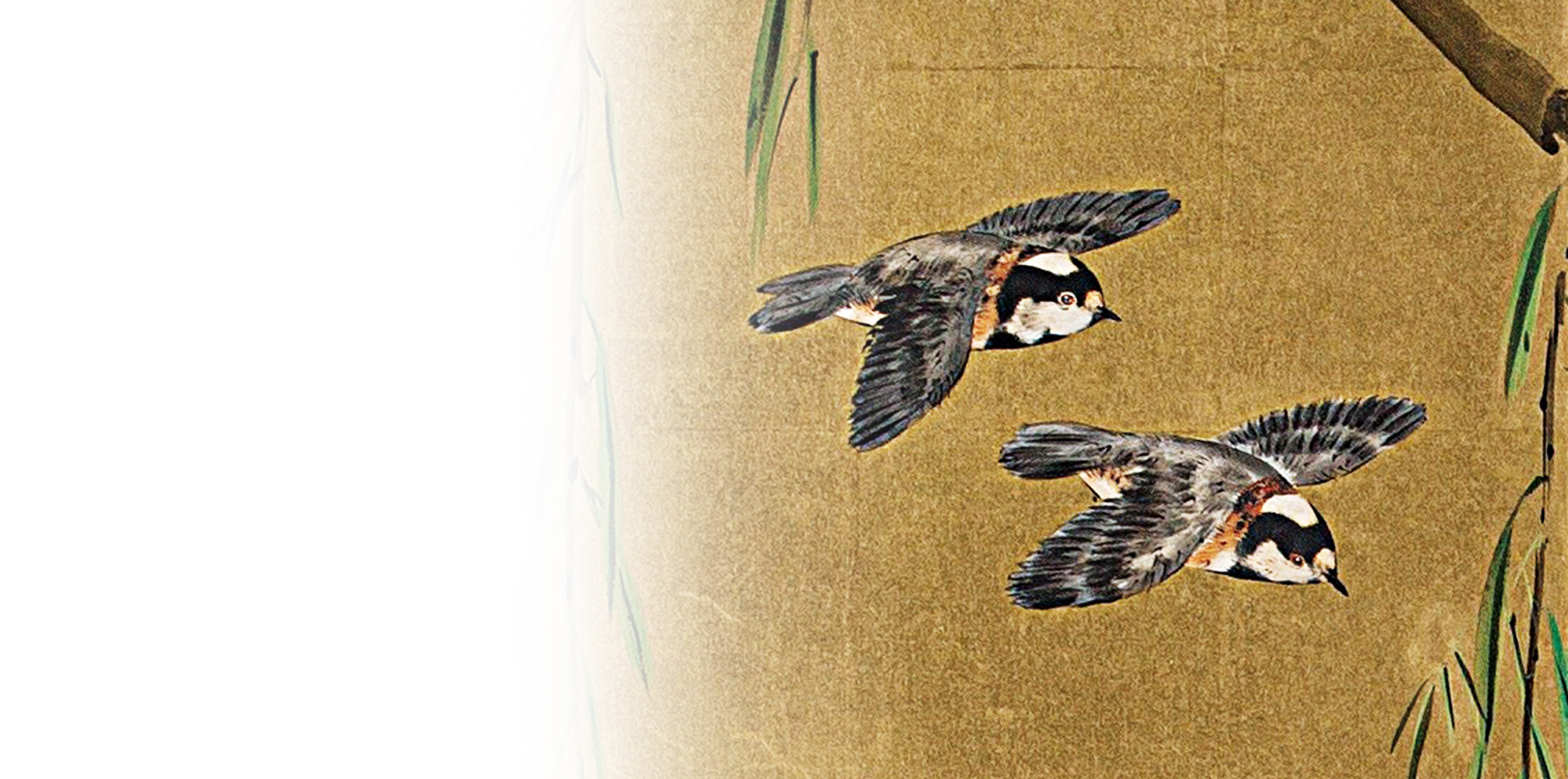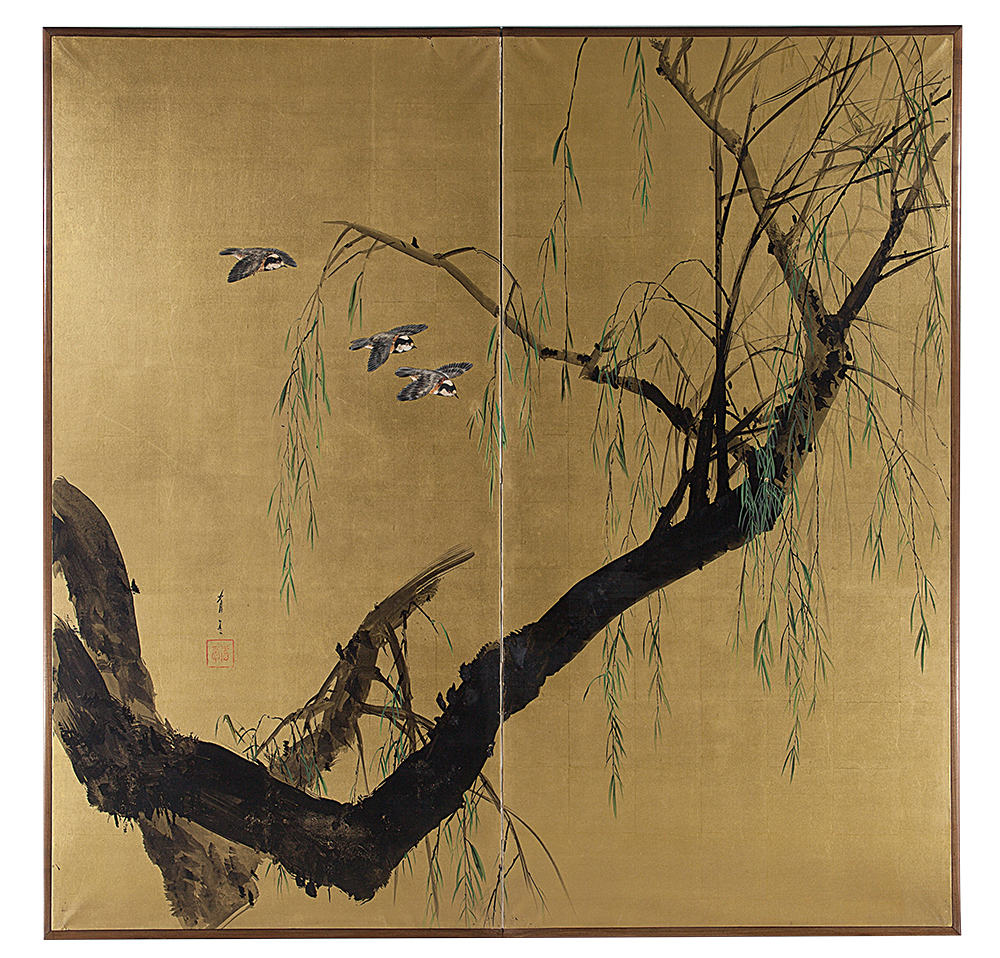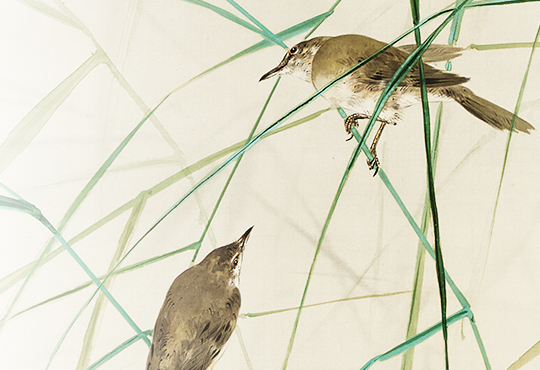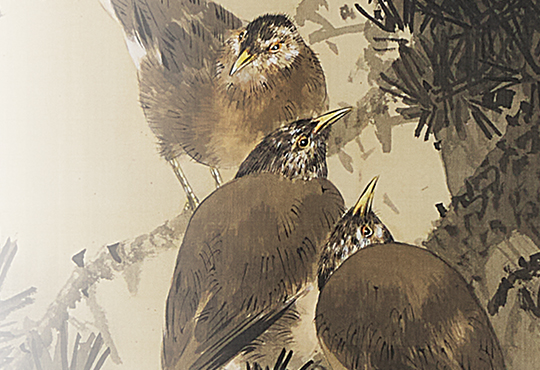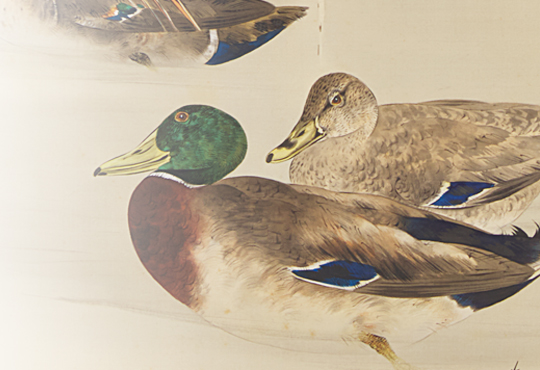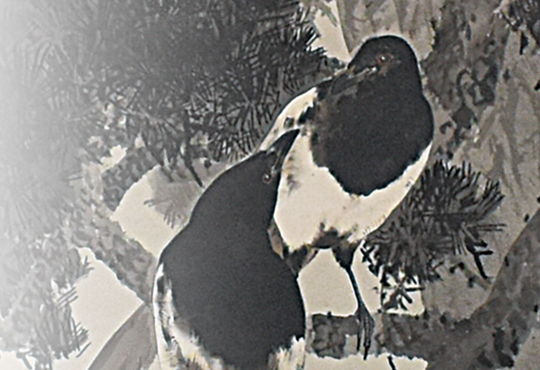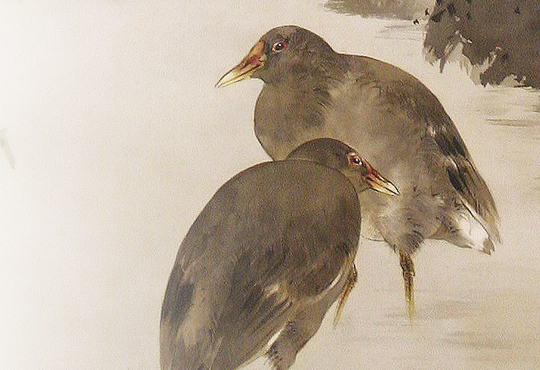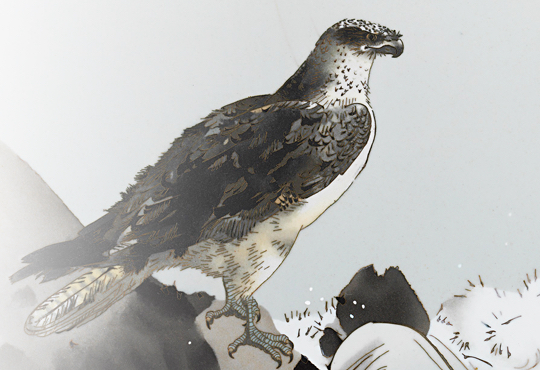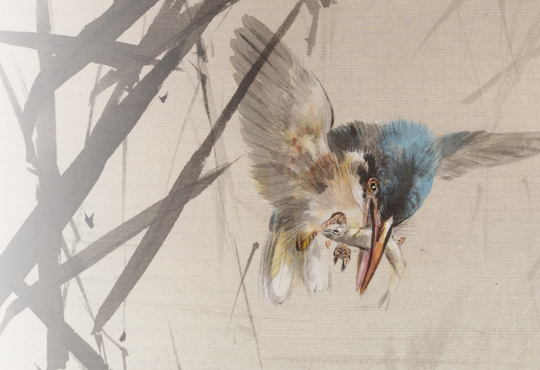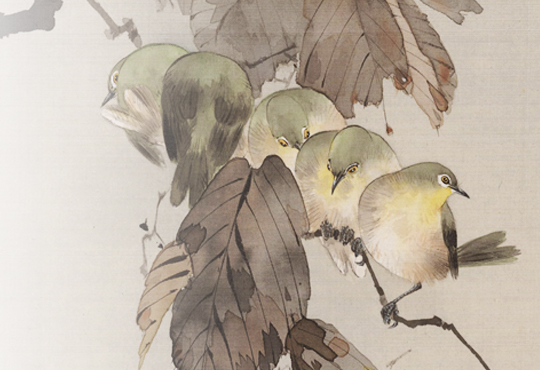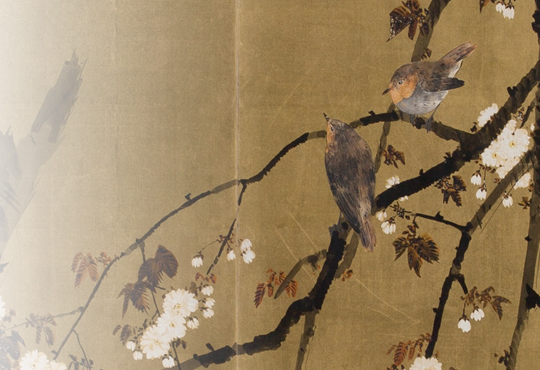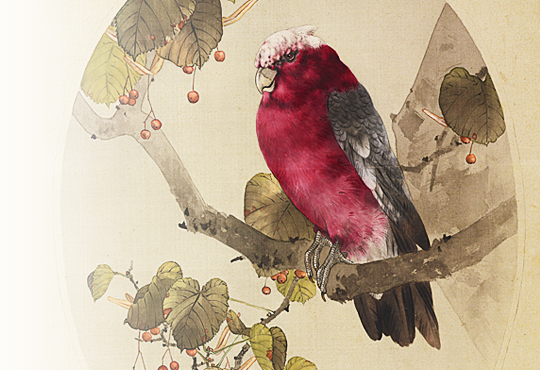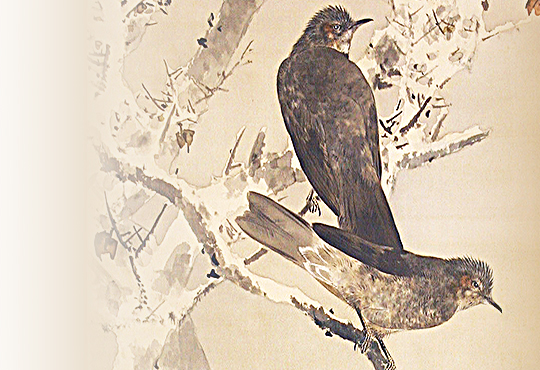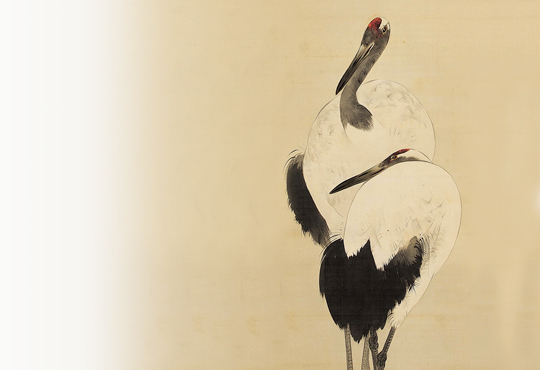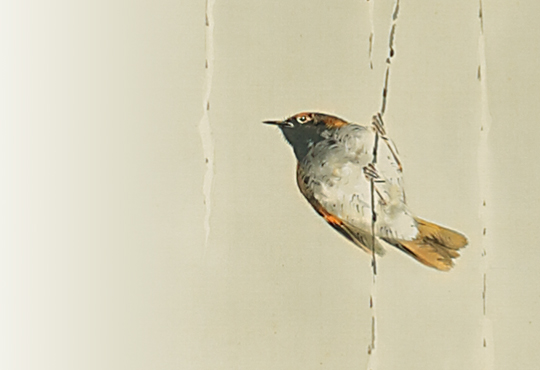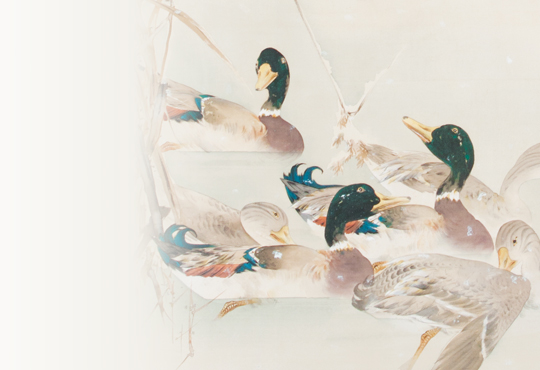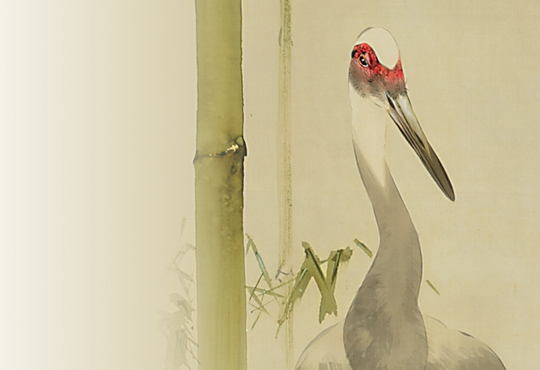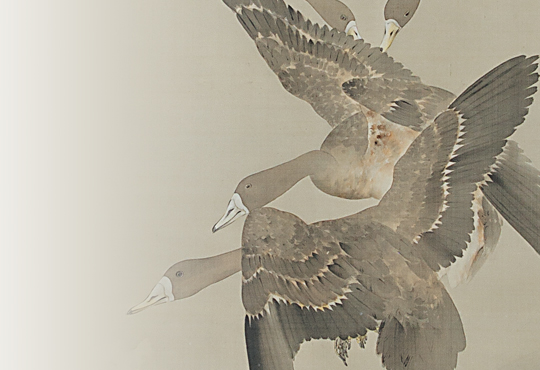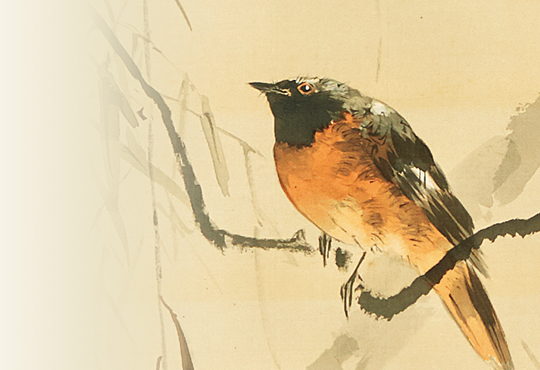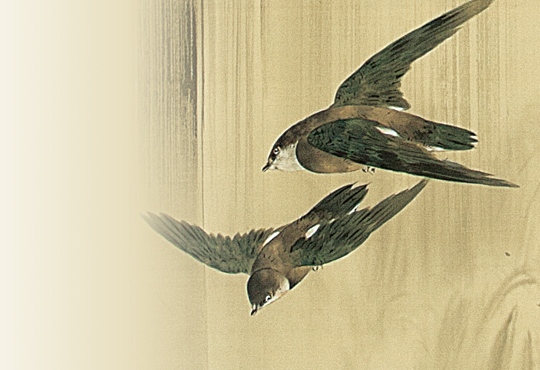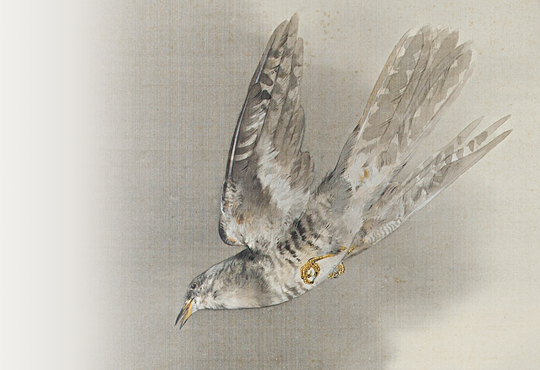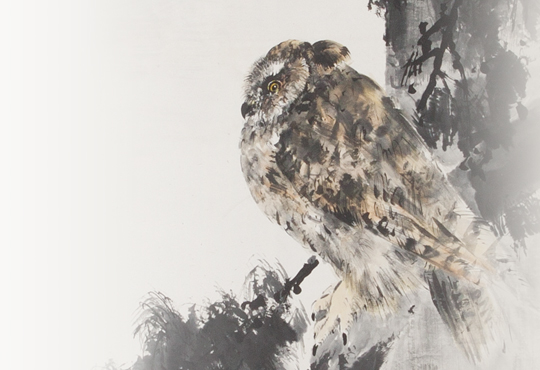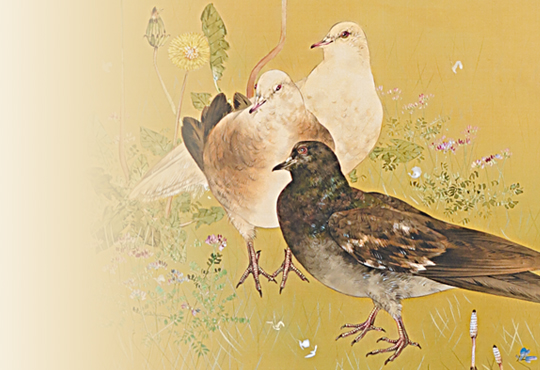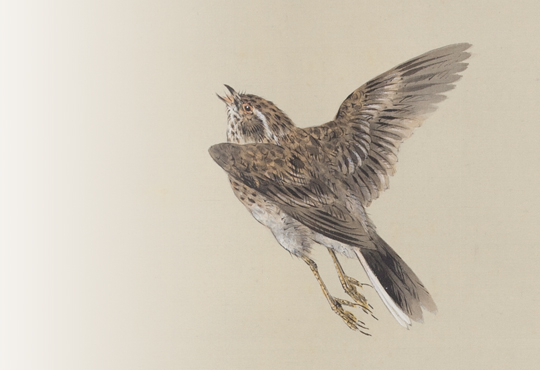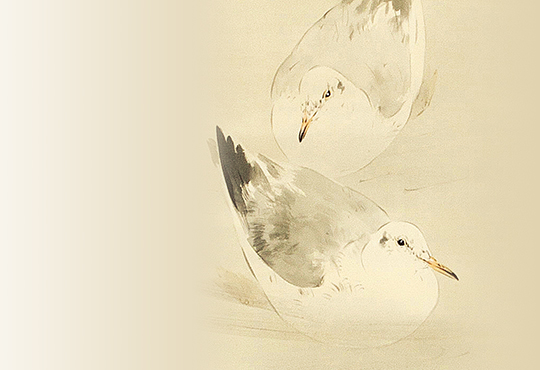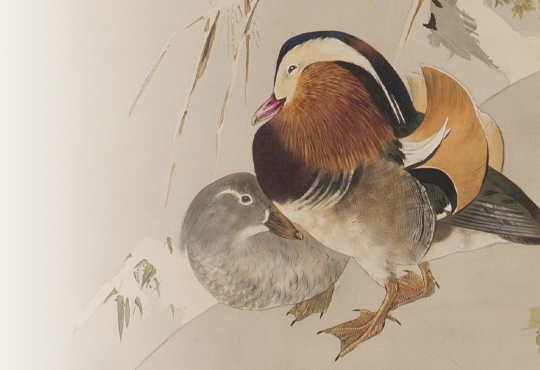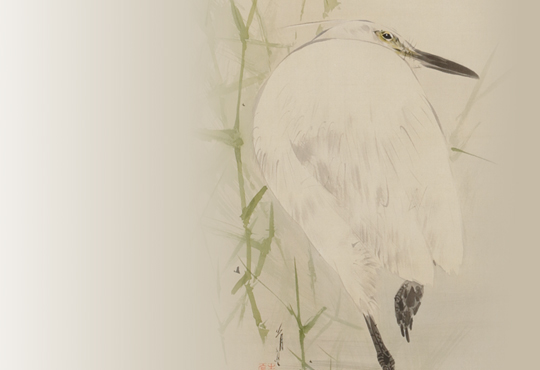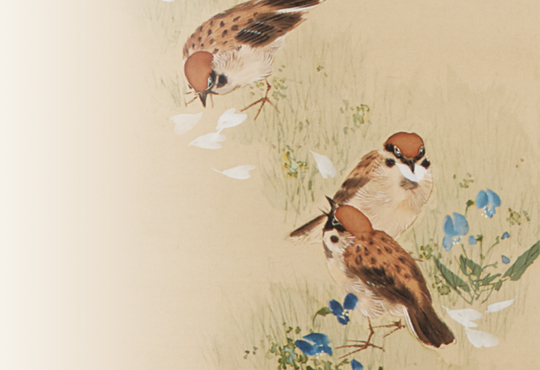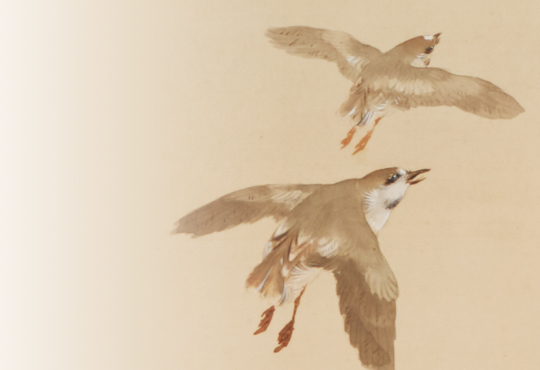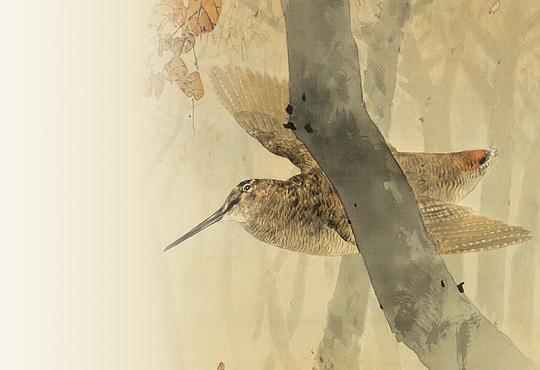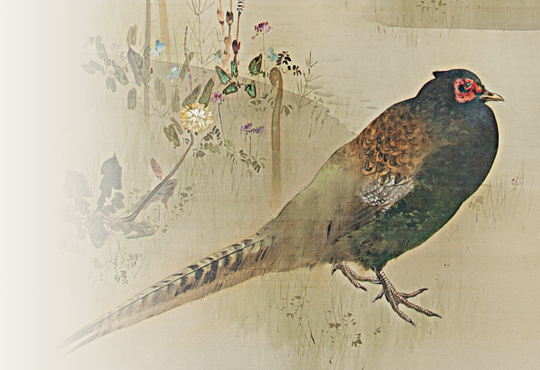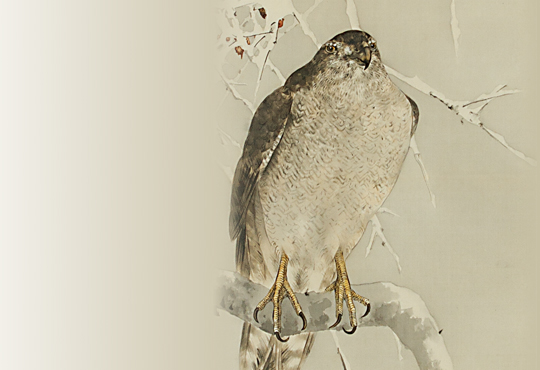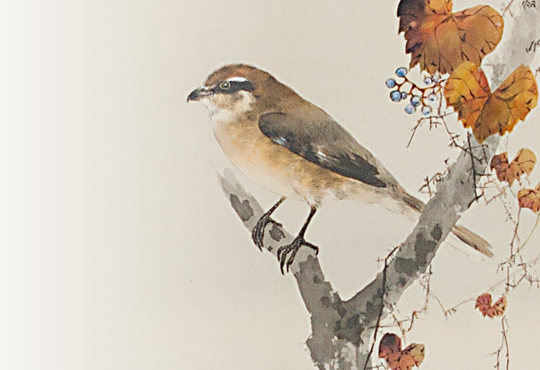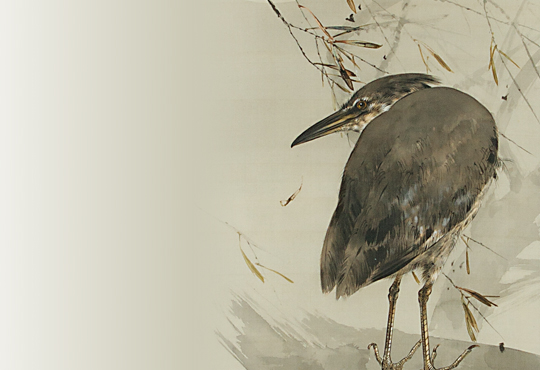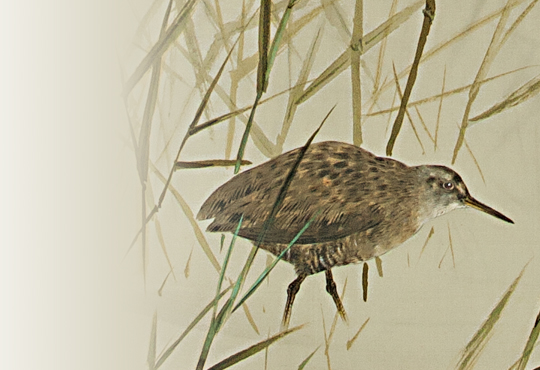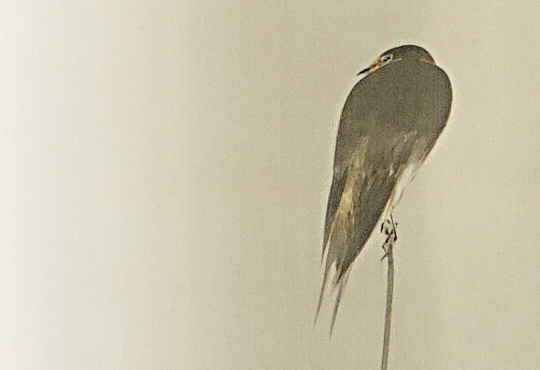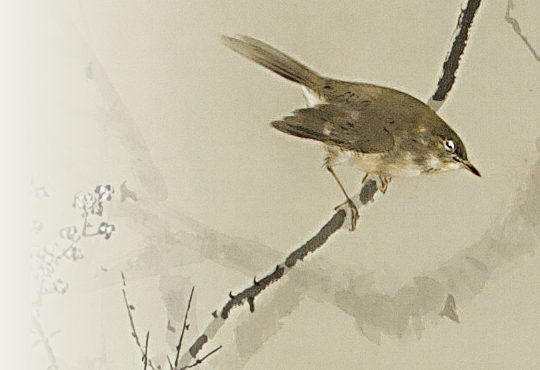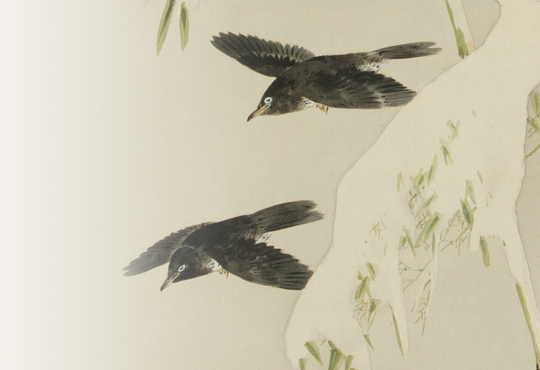Gold ground and color on paper Okabe Masayuki Collection
vol.31 Assumptions in the Back of Your Head: Birds and Flowers Screen
While I claim to be an ornithologist, the vast world of ornithology is endless and there’s always much more to go. Every day, worldwide research on many birds, even common species like as sparrows and crows, advances and, since it’s impossible to keep up with all the new insights, the world is filled with knowledge beyond my grasp. Fortunately, every time I discover something new and interesting, I become amazed by how fun ornithology is, and, most of all, how intrinsically boundless birds are. As an ornithologist, I would like to make and share new discoveries with the world to contribute to the development of ornithology as much as possible. Nevertheless, this is a difficult task I spend days struggling over.
Ornithological discoveries are not limited to academic papers and specialist literature. Beyond this, it occurs in everyday life and leisure. What overshadows these discoveries are the unconscious misunderstandings, misconceptions, and biases we hold. Doubting common sense and pre-existent knowledge is the foundation of academia and learning what and how to doubt is how you develop as a scholar. In this essay, I would like to present my long-held bias that was uncovered by a non-specialist.
Parus is a general term that collectively describes the tit family. Five of these species, the Japanese tit, the Varied tit, the Coal tit, the Willow tit and the Marsh tit, inhabits Japan. The Marsh tit can only be found in Hokkaido and the rest can be found almost nationwide, however, all birds inhabit forests. They nest in the tree hollows around the city and birdhouses in gardens, and they are common birds that can be seen at bird tables in the winter. Their main color tends to be white, black, or grey and, while the Varied tit is dipped in a reddish-brown, they all have characteristic patterns. In recent years, it has grown more evident that they are more linguistically advanced than humans, and this has sparked the attention of ornithologists and ethologists worldwide.
Parus birds have always been familiar to me. Japanese tits would perch on the bird feeder in the front yard of my family home, and Varied tits and Coal tits would continually roam around the tree groves of the shrines and parks nearby. In the winter, Willow tits would come from the mountains. They would live with other parus and you’d find mixed flocks that, in some cases, included small birds like the Long-tailed tit and the Japanese pygmy woodpecker. At times, they would come so close that I didn’t need binoculars, and I was able to take a closer glimpse at their beautiful feathers and adorable gestures. Having known them for quite a while, I thought I grew an accurate understanding of every aspect of their feathers’ colors and patterns.
What exposed my misconception was Torino Nanko’s manga, Toripan. In this manga, the author admits to misconceiving the patterns of parus birds and confesses to drawing them incorrectly. Parus birds have black heads, but the Japanese tit, Varied tit, and Coal tit have a light-colored pattern on their neck that lines up to the top of the head and gives the back of its head a bald appearance. Unfortunately, the author did not notice this and drew the back of the head black. After suddenly discovering her mistake, she was very surprised.
Reading this, I, too, was surprised at my own misunderstanding. Likewise, I was entirely caught under the assumption that the back of their heads were black. I reviewed some field guides and the internet for images of the birds. Indeed, their heads were not black, and they do look bald. Despite being a birdwatcher for about 20 years and getting a Ph.D. in ornithology, I could not even discern the notable features of these common small birds. This impacted me greatly and was a huge reflection for my own bias.
Now, I wonder if Seitei was able to notice this pattern on the back of their heads. For some reason, he rarely drew Japanese tits (I don’t even know of any works where he has), so let us examine his Varied tits. In addition to this work, there are several other works that depict the Varied tit, i.e., “Bird and Flowers of Winter Left Scroll” or “Cloisonne Ware (Titmouse with Cotton Rosemallow)” (Tokyo National Museum). He must have really liked the Varied tit.
As anticipated, his Varied tit had the seemingly bald pattern on the back of its head. As an expert of bird and flower painting and a master of the realist aesthetic, he knew which points to focus on. I do not want to accept that my abilities of observation are any less than Seitei’s, but this time I will obediently admit defeat.
Author : Masao Takahashi Ph.D. (Ornithologist)
Dr. Masao Takahashi was born 1982 in Hachinohe (Aomori prefecture) and graduated from Rikkyo University’s Graduate School of Science. Dr. Takahashi specializes in behavioral ecology and the conservation of birds that inhabit farmlands and wet grasslands. Focusing on the relation between birds and art, he has participated in various museum and gallery talks.
“Birds and Flowers Screen” on exhibit at the Okazaki Art Museum’s Okazaki Mindscape Museum!
“Watanabe Seitei Brilliant Birds, Captivating Flowers”
https://seitei2021.jp/english/
Dates: 2021/03/27 (Sat) to 2021/05/23 (Sun) *This exhibition has ended.
Venue: The University Art Museum, Tokyo University of the Arts
https://www.geidai.ac.jp/museum/exhibit/current_exhibitions_en.htm
Address: 12-8 Ueno Park, Taito-ku, Tokyo, 110-8714
NTT Hello Dial: +81 (0)3-5777-8600
Dates: 2021/05/29 (Sat) to 2021/07/11 (Sun) *This exhibition has ended.
Venue: Okazaki Mindscape Museum,Okazaki Art Museum
https://www.city.okazaki.lg.jp/museum/guidance/p008834b.html
Address: Okazaki Central Park,1 Aza Toge, Koryujicho, Okazaki, Aichi Prefecture 444-0002
TEL: +81 (0)564-28-5000
Dates: 2021/07/17 (Sat) to 2021/08/29 (Sun) *This exhibition has ended.
Venue: Sano Art Museum
https://www.sanobi.or.jp/eng/index.html
Address: 1-43 Nakatamachi, Mishima, Shizuoka, 411-0838
TEL: +81 (0)55-975-7278
